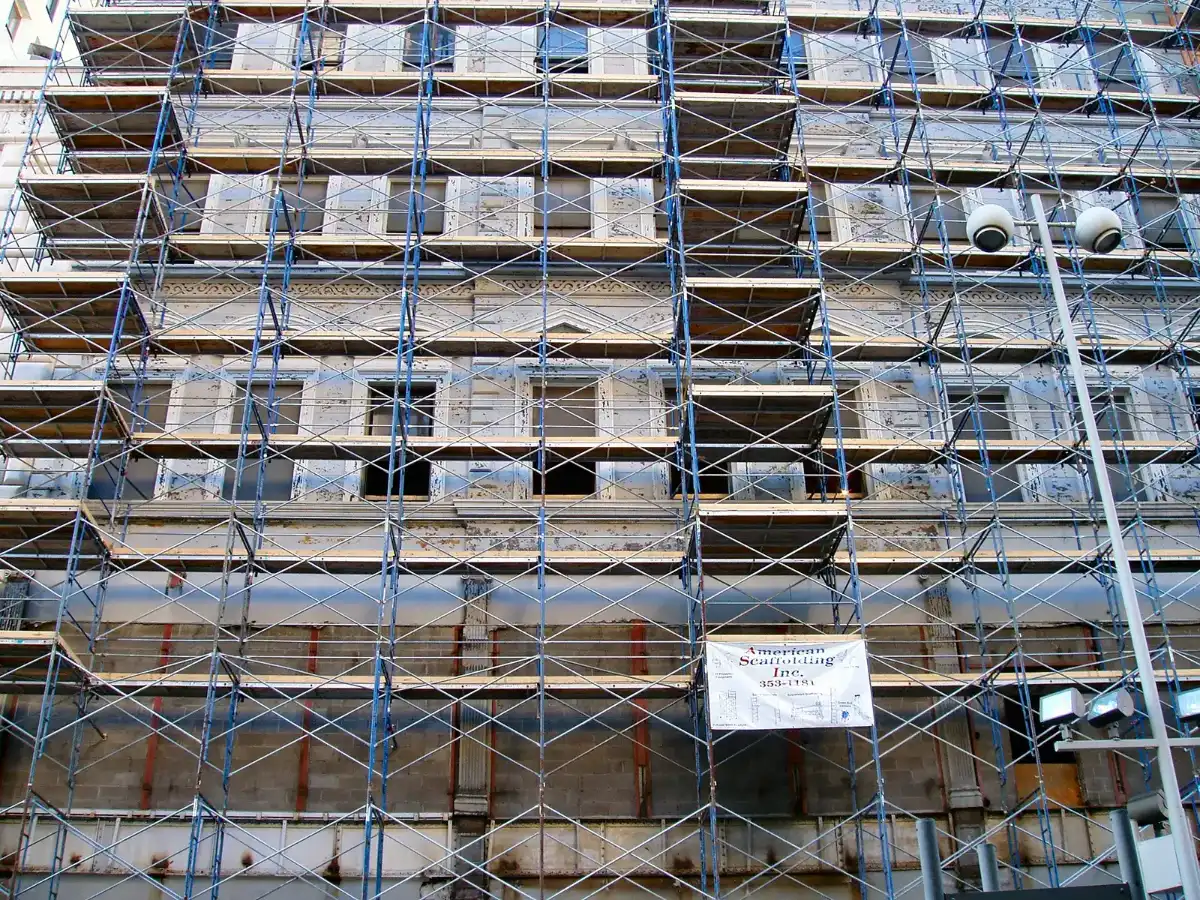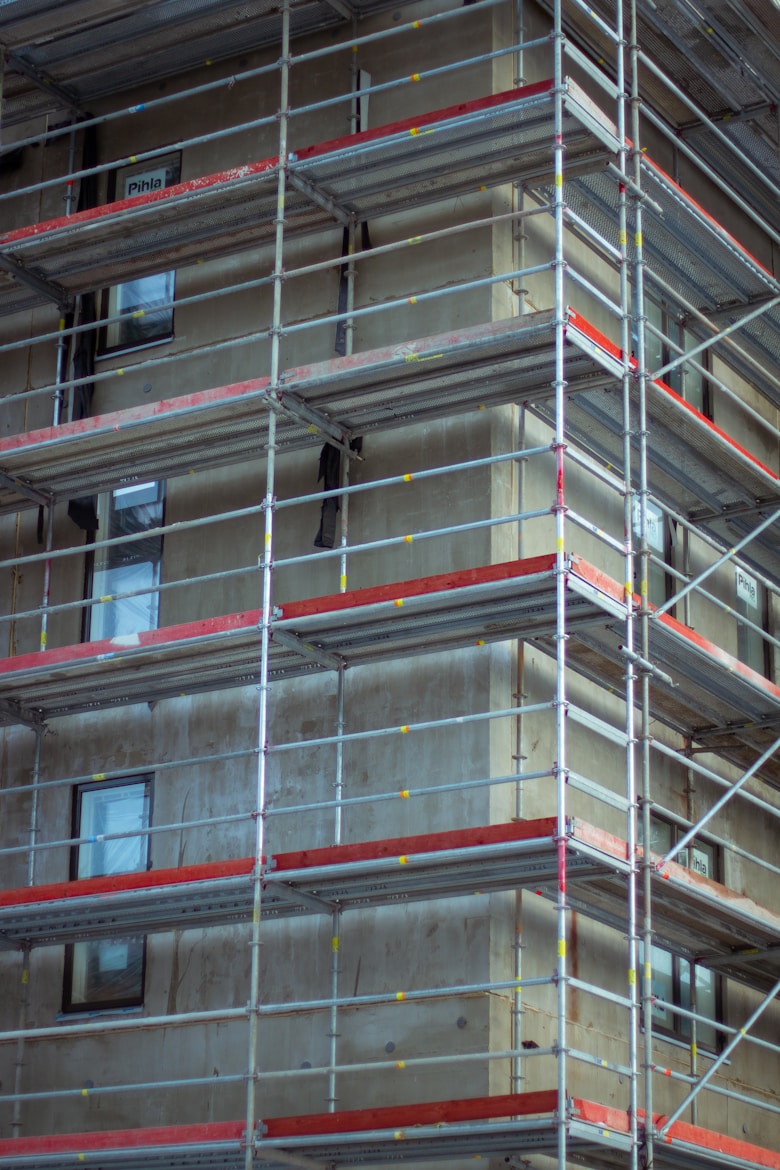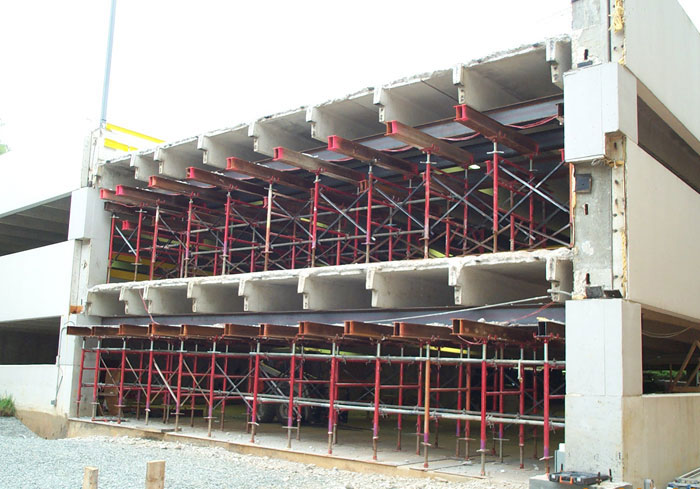In construction or renovation, safety and structural stability are the backbone of every successful project. Two essential systems—shoring and scaffolding—play pivotal roles in maintaining safety and efficiency. While these terms are often used interchangeably, they serve entirely different purposes. Shoring provides structural support, ensuring stability during construction or repair, whereas scaffolding focuses on creating a safe platform for workers to access different areas. Recognizing these distinctions is crucial for selecting the right system, avoiding delays, and mitigating risks during your project.
What is Shoring?
Shoring refers to a temporary structural support system used to prevent collapses or failures during construction or repairs. It ensures the stability of trenches, walls, and buildings when permanent reinforcements are either incomplete or unavailable. By offering robust support, shoring mitigates the risk of accidents and structural failures, ensuring that work progresses smoothly and safely.
Key Applications of Shoring
Excavations:
During trenching or large-scale digging, soil can become unstable and collapse, endangering workers and equipment. Shoring is employed to stabilize trench walls, creating a safe working environment and preventing costly project delays.
Structural Repairs:
When existing buildings or infrastructure undergo repairs, temporary support is vital to prevent collapses. For instance, shoring can stabilize walls or beams while damaged or deteriorating elements are replaced or strengthened.
New Construction:
In the early stages of construction, when permanent structures like walls or columns are not yet completed, shoring supports critical components until they can bear the intended loads. This ensures that construction can proceed without compromising stability or safety.
Types of Shoring
Shoring systems are highly versatile and are chosen based on the project’s specific needs, such as soil conditions, depth of excavation, and load requirements. Below are the most commonly used types:
Raking Shoring:
Raking shoring employs diagonal supports (rakers) that transfer the load of a wall to the ground. This method is particularly effective in stabilizing shallow excavations, retaining walls, or building facades during repairs. Adjustable and relatively easy to install, it’s a popular choice for temporary stabilization during emergencies or smaller-scale projects.
Soldier Pile Shoring:
Soldier piles are vertical steel beams driven deep into the ground and paired with horizontal supports such as timber lagging or steel plates. This method is highly effective for deeper excavations, such as underground parking garages or subway systems, where soil stability is critical. Its modular design makes it adaptable to various soil conditions.
Hydraulic Shoring:
Hydraulic systems utilize adjustable pistons to stabilize excavation walls. These systems are highly efficient for trenching projects as they can be installed quickly and adjusted to fit varying trench widths. Hydraulic shoring also reduces the manual labor required compared to traditional methods, making it a safer and faster solution for time-sensitive projects.
Beam and Plate Shoring:
This technique involves horizontal beams supported by vertical plates or braces, creating a robust framework for stabilizing larger openings or walls. It’s commonly used in projects requiring significant lateral support, such as tunnels or basement constructions. Beam and plate systems offer high strength and adaptability, making them suitable for both temporary and semi-permanent applications.
Why Shoring Matters
The role of shoring extends beyond just providing support—it’s about safeguarding lives, protecting investments, and ensuring project timelines are met. Without proper shoring, large-scale excavations or repairs can result in catastrophic failures, leading to injuries, delays, and financial losses.
The Hidden Costs of Skipping Shoring:
Failing to implement the right shoring system can result in:
- Soil collapses: Endangering workers and equipment.
- Structural instability: Risking long-term damage to buildings or infrastructure.
- Project delays: Increasing costs and affecting project deadlines.
Partnering with experienced professionals for designing and installing shoring systems ensures compliance with safety standards and project-specific needs. For example, an excavation project requiring deep trenching may benefit from soldier pile shoring, while hydraulic shoring might be the ideal choice for smaller, fast-moving projects.
How to Choose the Right Shoring System
Selecting the most suitable shoring system requires careful assessment of project details, including:
- Site Conditions: The type of soil, depth of excavation, and proximity to other structures.
- Load Requirements: Understanding the forces that the shoring system needs to resist.
- Project Scope: Considering the duration, complexity, and budget of the project.
Consulting with structural engineers and experienced contractors can help determine the best solution, balancing safety, efficiency, and cost.
What is Scaffolding?

Scaffolding is a temporary platform designed to support workers and materials during construction, maintenance, or repair projects. Unlike shoring, which focuses on structural stability, scaffolding prioritizes accessibility and safety, enabling workers to reach elevated or hard-to-access areas with ease. Its flexibility and adaptability make it an indispensable tool in construction and other industries.
Common Uses of Scaffolding
Scaffolding plays a vital role in various construction and maintenance scenarios:
- Building Construction: Provides stable platforms for workers to build or assemble structures, ensuring safety while working at different heights.
- Repairs and Maintenance: Facilitates access to difficult-to-reach areas, such as ceilings, chimneys, or high walls, for repairs or inspections.
- Exterior Work: Serves as a reliable platform for painting, finishing, or cleaning building facades, especially in multi-story or high-rise projects.
“Scaffolding systems are designed to provide workers with secure platforms, significantly reducing the risk of accidents while improving efficiency on site.” – Scaffolding Solutions (source).
Types of Scaffolding

Scaffolding systems are tailored to meet the unique demands of projects, considering factors like height, mobility, and structural requirements. Below are the most commonly used types:
- Supported Scaffolding: A versatile and sturdy system with platforms supported by rigid, vertical posts. Ideal for mid-sized projects, this type is easy to assemble and disassemble, making it a popular choice for general construction.
- Suspended Scaffolding: Platforms are suspended from the roof or upper levels of a building using ropes or cables. Perfect for high-rise buildings, this system is often used for window cleaning, exterior painting, or maintenance tasks.
- Rolling Scaffolding: Equipped with wheels, this mobile scaffolding allows for easy repositioning, making it suitable for tasks that require frequent movement, such as interior painting or electrical work.
- Cantilever Scaffolding: Supported by projecting brackets or beams anchored to the building, this type is ideal for narrow spaces or situations where ground support is impractical, such as above busy sidewalks or in confined areas.
According to Southwest Scaffolding choosing the right type of scaffolding depends on project-specific factors such as height requirements, site constraints, and worker safety needs.
Shoring vs. Scaffolding: Key Differences
While both shoring and scaffolding are essential for construction projects, their purposes, designs, and applications differ significantly:
| Aspect | Shoring | Scaffolding |
|---|---|---|
| Purpose | Stabilizes structures or excavations to prevent collapses during construction or repairs. | Provides secure access and platforms for workers and materials at elevated areas. |
| Design | Includes supports, braces, or hydraulic systems to resist forces and stabilize structures. | Comprises platforms, vertical posts, and horizontal members for safe workspaces. |
| Applications | Primarily used for excavation support, structural stabilization, or during repairs. | Commonly employed for construction, maintenance, painting, or exterior finishing tasks. |
| Mobility | Stationary and designed for structural stability. | Often mobile, especially in rolling scaffolding, to accommodate project needs. |
| Load Handling | Designed to bear significant lateral and vertical loads to stabilize heavy structures. | Designed to support workers, tools, and light materials for specific tasks. |
“The choice between shoring and scaffolding is project-specific and depends on the stability, height, and access requirements.” – Juan Carlos Calderón, Civil engineer from Alsina Group (source).
Why Understanding the Differences Matters

Choosing the right system—whether shoring or scaffolding—depends on the specific needs of your project. Shoring is essential when structural stability is at risk, while scaffolding ensures safe and efficient access to various work areas. Consulting experienced professionals and adhering to safety regulations is key to maximizing the effectiveness of either system.
By integrating the right solution, you not only enhance safety but also ensure project timelines and quality standards are met without compromise.
Choosing the Right System
The choice between shoring and scaffolding boils down to project requirements:
- Shoring: Opt for this when stability and support are priorities, such as during structural repairs or excavation.
- Scaffolding: Ideal for providing a secure working platform at various heights.
Partnering with Experts
Complex projects often demand tailored solutions. Professional scaffolding companies provide customized systems and ensure proper installation and maintenance, addressing unique site challenges. Their expertise ensures not only compliance with safety standards but also smooth project execution. To explore scaffolding options, visit B-Mat Scaffolding.
Conclusion
Shoring and scaffolding are vital tools in the construction world, each designed to tackle specific challenges. Understanding their differences allows you to make informed decisions, ensuring both safety and productivity. Whether stabilizing a structure or creating a safe workspace, partnering with professionals will help your project succeed seamlessly.





